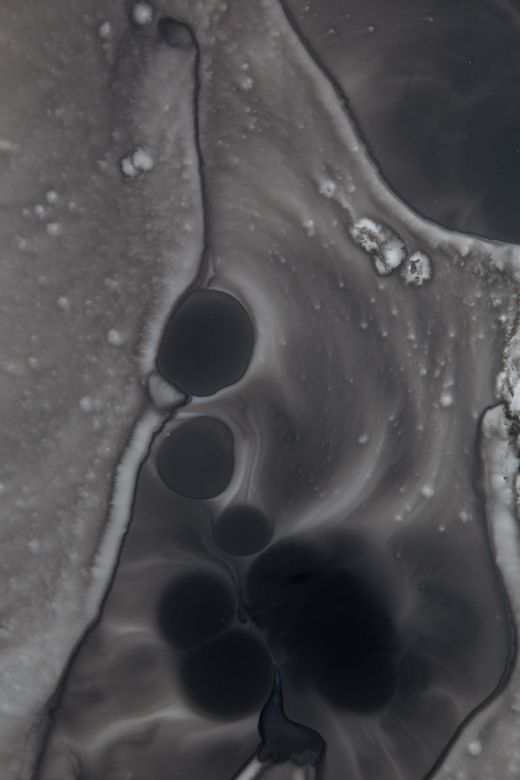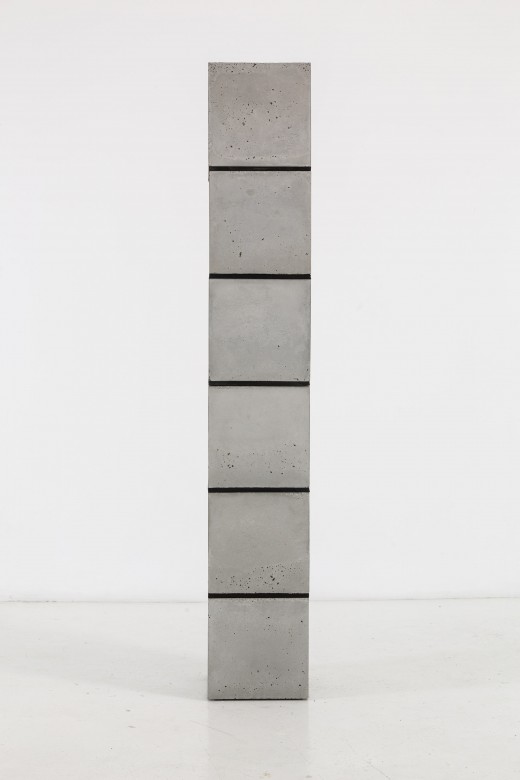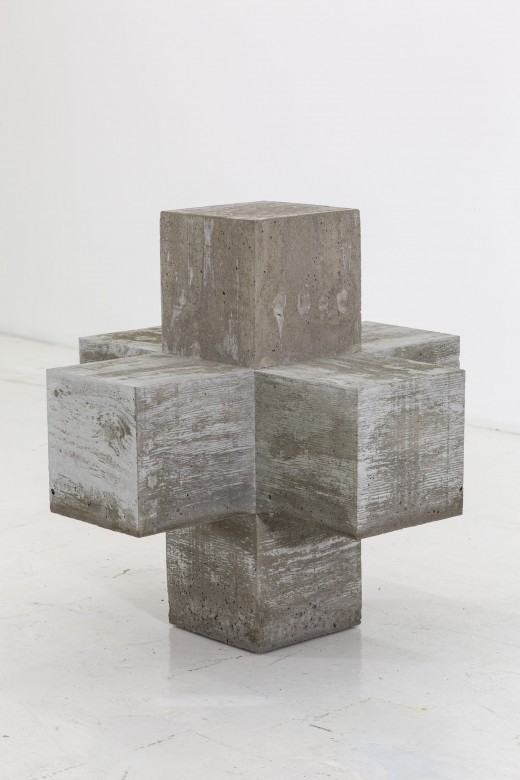- Tatiana Vahan, A Narrative of An Artist Exploring Capitalism

- Michael Jones Mckean, we float above to spit and sing
Bhakti Baxter, 2014
Hunter Braithwaite

A detail of one of Bhakti Baxter's ink on mylar prints.
April 3rd – May 10th, 2014
1.
Water had long pooled in the worn crevasses in the floor. The front door, touched with clouds of paint from earlier vandals, took several solid kicks before it opened. Inside the air was dense and mineral. Floods had lapped against the walls, depositing the particle waste of the city before soaking back into the spongy ground. The floors, it seemed, were white at one time.
There were five concrete forms in the dirty room. As you approached them your feet slipped in the shoals of dust and sand rippled on the floor. Nine triangles stacked to form one. Three hard cubes upset with stucco. Stucco. A strange, foreign word. You glided your fingers along the surface and they came away filthy and tingling.
A pinched oval—optical or vaginal, harbinger of knowledge or birth. Some sign of some god. A three-dimensional cross, or was it a traffic intersection? Crossroads existed only as metaphors. They were as gnostic as ley lines. In South Florida, the elevated highways were the only paths that could be traversed year round.
A tower of six cubes, stacked with rubber mats in between, mimicked the barrier condos: vast accumulations of private temples whose antechambers might have once housed these objects, now taken over by seabirds. Bubbles dotted the surfaces of the sculptures like minnows skimming across the eroded limestone of the Lincoln Road Mall.

Bhakti Baxter, Rubber Spine, 2014. Concrete, Rubber.
Three years before 2014, Bhakti Baxter glued a photo-reproduction of a Henry Moore sculpture to a photograph of a forest. In this new context, the sculpture’s smooth curves harkened not to the sculptor’s hand, to the sensibilities present in post-war London, but to the cold ever-lapping flow of a mountain stream, somewhere in nature, anywhere in time, smoothing the surface of a stone. An alternate modernity, the artist said.
3.
MIAMI BEACH — The sunny-day flooding was happening again. During high tide one recent afternoon, Eliseo Toussaint looked out the window of his Alton Road laundromat and watched bottle-green saltwater seep from the gutters, fill the street and block the entrance to his front door. –Coral Davenport, “Miami Finds Itself Ankle Deep in Climate Change Debate,” published in The New York Times (May 7th, 2014)
4.
The purity of form satisfies some innate need for order, something which makes sense, leftover from our Druid early dawn. We could say that the sculptures are about geometry, which means they are about everything under the sun.
5.
Measurement of the earth.
6.
The average elevation of Miami is six feet above sea level. Rubber Spine, Baxter’s tower of concrete and rubber, is 75.25 inches tall. If one removed the rubber, it would be six feet about the gallery floor. Tall as a man in galoshes.
7.
Should everything in Miami be reconsidered in light of the coming floods? In the light of the coming floods. Mirrored streets reflecting a chrome sun.
8.
These sculptures are ruins in reverse. Instead of breakdown and rot, we have consolidation, formal re-entrenchment.

Bhakti Baxter, XYZ Construction #2 (symmetrical version), 2014. Concrete.
A city—any city, every city— is the eradication, even the ruin, of the landscape from which it rose. In its fall, that original landscape sometimes triumphs.” –Rebecca Solnit, Storming the Gates of Paradise, 2007
10.
As time passes they gain new purity. Submerged imperfections and immediacies weevil their way to the surface, allowing for a greater density within. These are negative entropy. Reverse time. These stones call for a beach to have been washed away, scraped down to the coral cartilage. A city inundated. An alternate future, if it wasn’t so inevitable.









